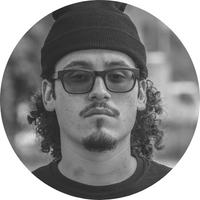
 Roni Essex
Freediver, Spearo, Creator
Roni Essex
Freediver, Spearo, Creator

 Roni Essex
Freediver, Spearo, Creator
Roni Essex
Freediver, Spearo, Creator
You might recognize Jacques Cousteau by his red hat and the soothing French accent as he described the wonders of the sea. But he also became an icon of ocean exploration and environmental conservation by helping both scientists and the general public learn more about the beauty of the vast, strange underwater world. How did one man manage to have such an effect?
Jacques-Yves Cousteau was born in 1910 in the south of France, and as a child, he developed a fascination with water. At the age of 20, he went off to the French Naval Academy, where he planned to become a pilot. But after breaking both of his arms in a serious car accident, he turned back to his interest in the sea. As a young Naval officer, together with engineer Émile Gagnan, he created the Aqua Lung, which was the first self-contained underwater breathing apparatus. The Aqua Lung was a type of diving regulator, which changes the pressure of gas in a compressed cylinder so it can be easily breathed by the diver. This invention allowed the two of them to explore underwater more easily. After leaving the Navy, he went on to design a diving saucer, the first submersible vehicle, or submarine, dedicated to scientific exploration. It allowed two crew members to travel and film at depths of up to 350 meters.
Cousteau also pioneered underwater research facilities for housing so-called oceanauts, where they could work for weeks at a time without returning to the surface. His three experiments, called Conshelf I, II, and III, were conducted in the 1960s. Since then, they’ve helped prepare humans for missions to extreme environments … like space. He also created a bunch of organizations dedicated to exploring the oceans.
When he left the Navy in 1949, for example, Cousteau leased his now-famous ship the Calypso, and turned it into a floating lab. This led him to create the French Oceanographic Campaigns and he began diving and filming the seas, as well as conducting underwater archaeological explorations of shipwrecks. He realized that he needed to get the public interested in his work to find funding for his research, so he wrote his first book with Frédéric Dumas in 1953, The Silent World. The book described his early adventures after inventing the Aqua Lung and his exploration of shipwrecks.
Cousteau’s careful observations also gave him insight into new theories about the ocean and marine life. For example, in describing an interaction with a pod of dolphins, he proposed that they used sonar, long before it was ever confirmed by science. This book became so popular that Cousteau adapted it into a documentary film, also titled The Silent World. And in 1956, this documentary won the Palme D’Or award at the Cannes Film Festival, the first time a documentary had ever won the award, and later won an Oscar.
He also ended up hosting a popular television series, called the Undersea World of Jacques Cousteau. It was a documentary-style series that ran from 1968 - 1975 and showed the adventures of Cousteau and his crew as they studied the seas, focusing on the beauty and diversity of ocean life. As a young filmmaker, Cousteau was sometimes more concerned with producing the best story, and there’s evidence that his crew may have mistreated animals to get the perfect shot. But as his writing and films became more popular, Cousteau began to recognize the detrimental effects of human activity on the ocean. During his expeditions, he began to notice pollution in the waters, even thousands of miles away from land, and he saw less diversity among the sea life. He understood his own failings as an adventurer, and later insisted on leaving in video clips from earlier films that showed his crew killing sea life.
Over the course of his life, Cousteau became involved in a lot of scientific institutions dedicated to studying and exploring the sea, as well as conservation groups aimed at protecting the oceans and marine biodiversity. In 1960, for example, he worked to rally public support and convince politicians to stop a huge dump of radioactive waste into the Mediterranean Sea. And in 1973, he founded the Cousteau Society for the Protection of Ocean Life, an organization that is still active today, and aims to teach people about our oceans and their ecosystems. He also helped restrict commercial whaling by putting pressure on heads of state, which led the International Whaling Commission to ban killing whales for commercial purposes in 1986.